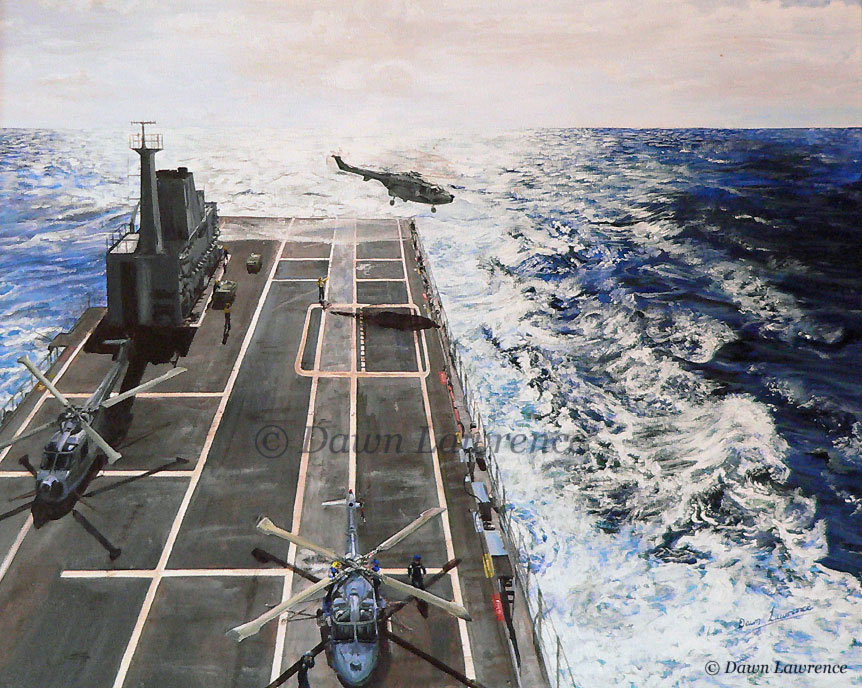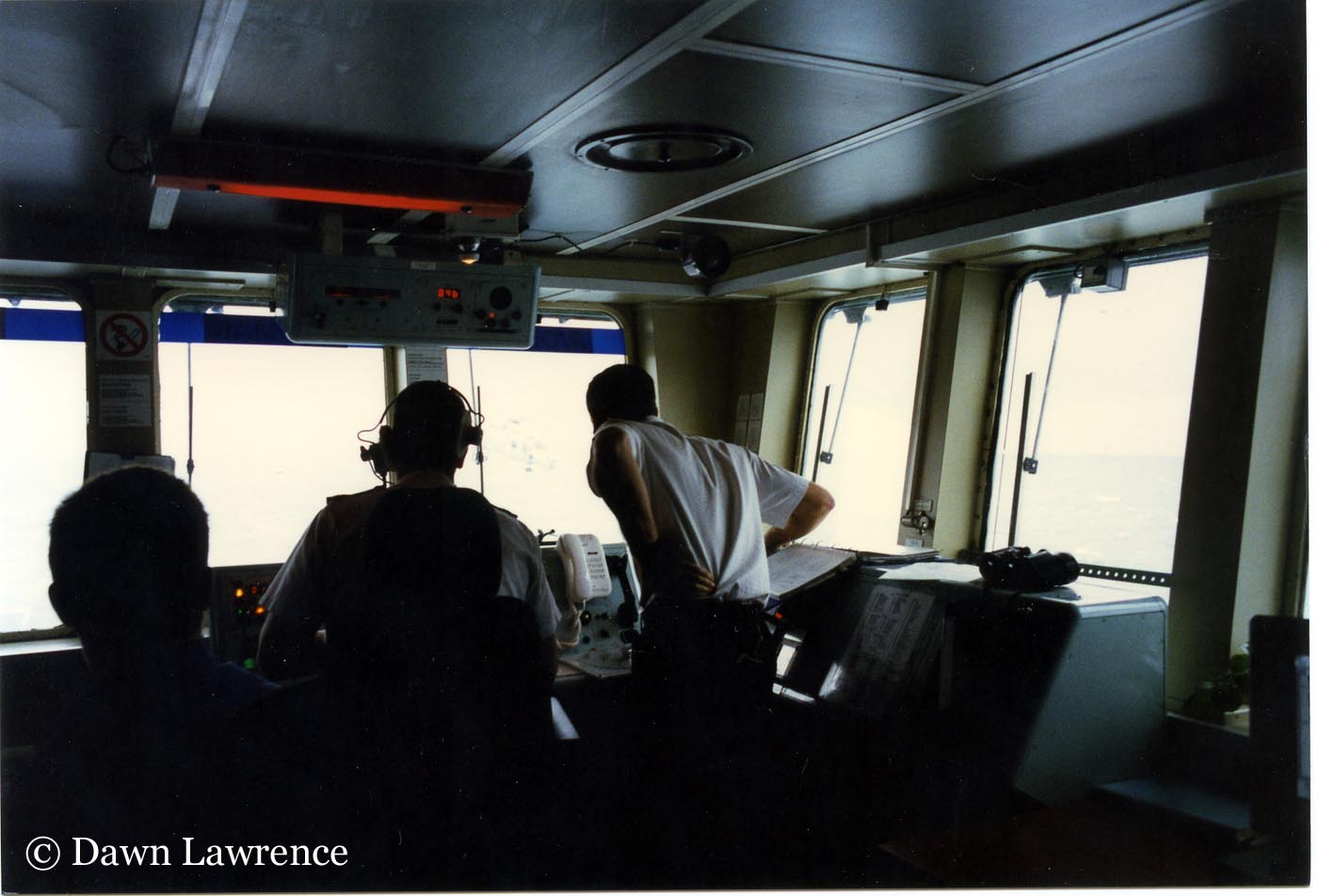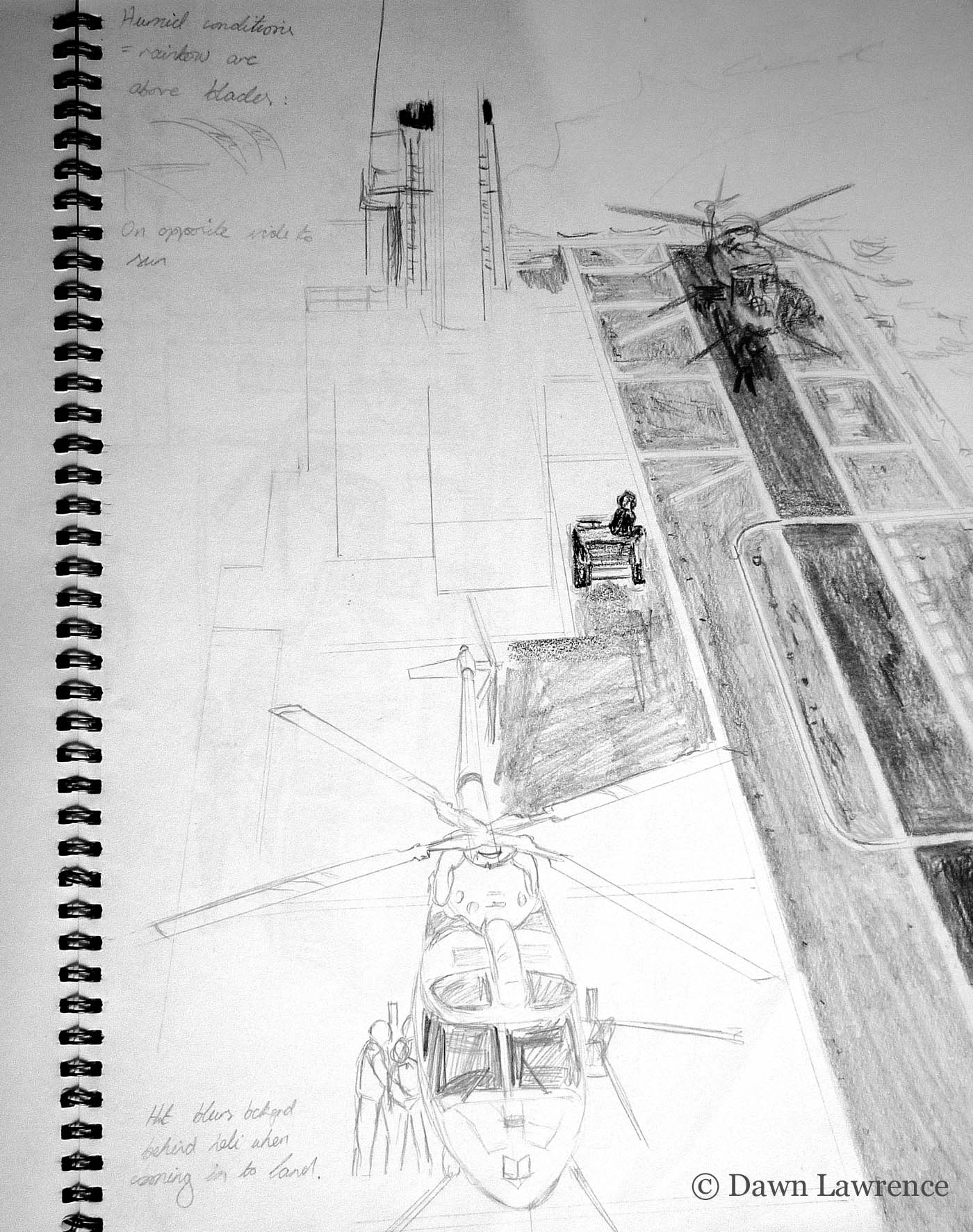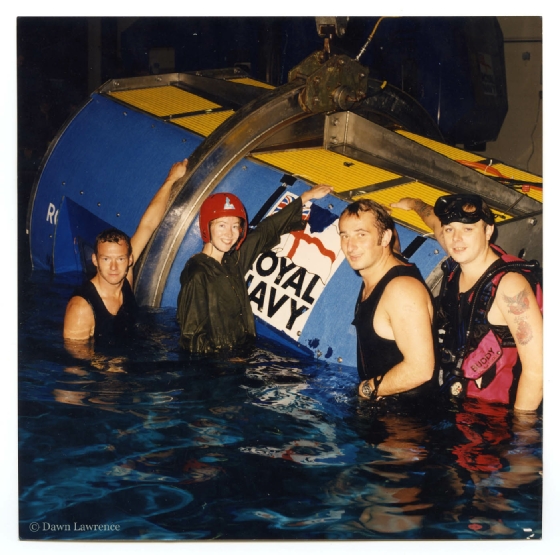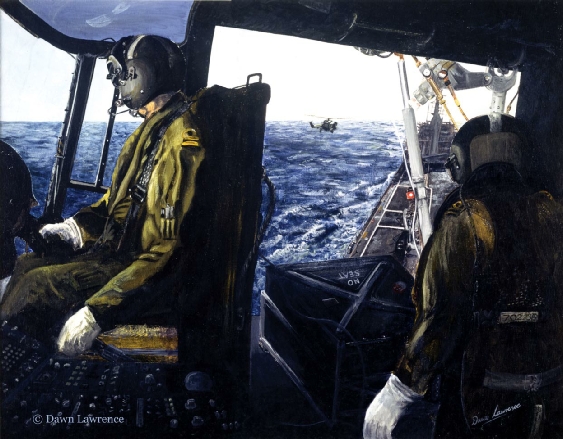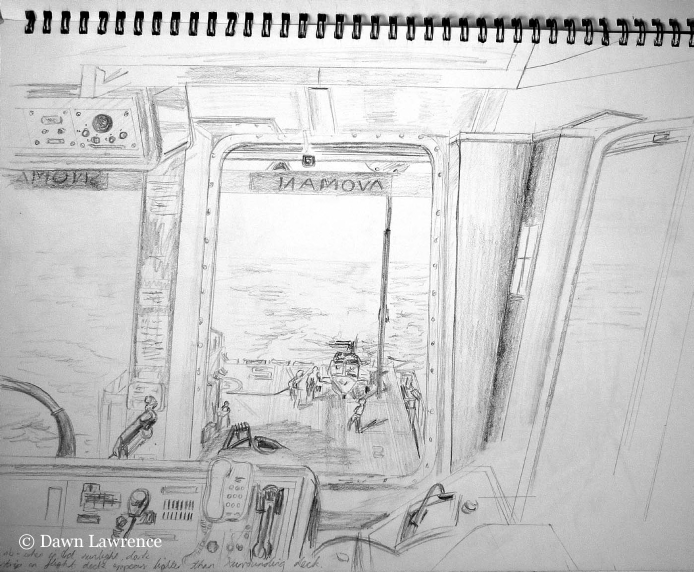Artist On Board
Copyright maintained on all images displayed on this site. All rights reserved
All images and sound files on this site are protected by Copyright with all rights reserved. The paintings reproduced here may not be copied, edited, adapted, redistributed, altered or otherwise used in any way without the prior written permission of Dawn Lawrence. Any unauthorised publication, copying, hiring, lending or reproduction is strictly prohibited and constitutes a breach of copyright and will be pursued.
This commission from Admiral Terry Loughran was the project that really kick started my career as an artist, It gave me the self belief that I could work in an industry in which is notoriously difficult to make a living.
In October 1997, I was invited to spend a fortnight aboard RFA ARGUS working as the official artist to the Royal Navy Lynx 702 Squadron. Because I was going to fly in one of the helicopters, I had to complete a training course in the "Dunker”. This is a simulator that trains pilots and crew how to escape from a helicopter which has ditched into the sea: something made more complicated by the fact that the helicopter will turn upside down once in the water and then sink. This takes place in a specially made swimming pool with divers on hand and you have to practise escaping from the front and back seats of the helicopter in rough and smooth conditions in day and night simulations. It was all great fun, however, it did make me think about how many flights I had done myself over water at night with no escape training for force landing on water...
We embarked from Plymouth and travelled to the port of Lisbon and back, during which time 702 Squadron performed training exercises with the Lynx helicopters. My brief was to produce a painting for the squadron's wardroom that depicted the role that the squadron plays in the navy. My work involved me making sketches and photographing the work and day to day life on board the ship, which I would then use as a reference to produce my painting . You will see from the sketches here that I often write notes about the light and shadow, details about blurring from the heat of the engines or the meaning of the signals given by ground crew. I find these notes invaluable when I come to actually paint the image : photographs are great, but sketches bring back to mind many more details because you have really looked at the subject when you make a drawing. I helps me capture things like movement and colour changes because of the light. It's also helpful for when you haven't quite managed to take a photo of the bit you needed which is something that you normally find out once you return to your studio!
My sketches here are mostly rough and ready because they are of moving people and helicopters on a moving ship, sometimes with an added touch of queasiness…
The highlight of the trip was of course flying in the Lynx. I sat in the front left seat whilst the crew carried out “secondary roles", an exercise in which the slung loads are attached to hang below the helicopter and be transported. I decided to use this unique perspective for my painting for 702 squadron. The painting “Flight operations RFA ARGUS” was inspired from watching flying exercises from Flight Control.
I wish to thank Admiral Terry Loughran for making this possible and 702 Squadron and both the Royal Navy and RFA Crew for all their help and for making me feel so welcome on board.



